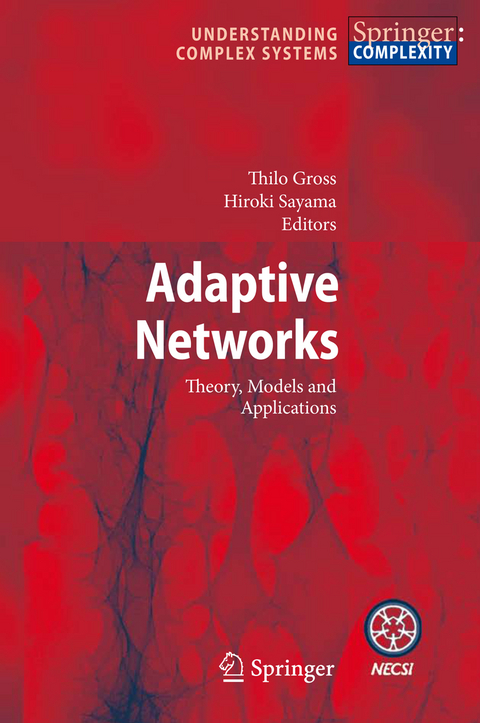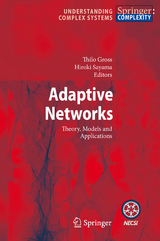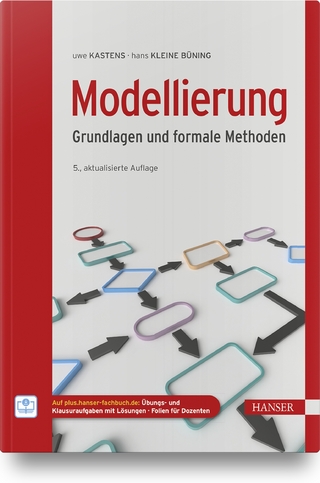Adaptive Networks
Springer Berlin (Verlag)
978-3-642-01283-9 (ISBN)
I Real-World Examples of Adaptive Networks.- Social Group Dynamics in Networks.- Time-Dependent Complex Networks: Dynamic Centrality, Dynamic Motifs, and Cycles of Social Interactions.- Adaptive Biological Networks.- Adaptive Networks.- II Self-Organization of Adaptive Networks.- Self-Organized Criticality and Adaptation in Discrete Dynamical Networks.- Self-Organization and Complex Networks.- Self-Organization of Network Structure in Coupled-Map Systems.- Dynamical Optimization and Synchronization in Adaptive Complex Networks.- III Contact Processes and Epidemiology on Adaptive Networks.- Contact Processes and Moment Closure on Adaptive Networks.- Noise Induced Dynamics in Adaptive Networks with Applications to Epidemiology.- IV Social Games on Adaptive Networks.- A Dynamic Model of Social Network Formation.- Evolutionary Games in Self-Organizing Populations.- The Diplomat's Dilemma: Maximal Power for Minimal Effort in Social Networks.- V Graph-Rewriting-Based Approaches.- Graph-Rewriting Automata as a Natural Extension of Cellular Automata.- Generative Network Automata: A Generalized Framework for Modeling Adaptive Network Dynamics Using Graph Rewritings.
From the reviews:
"The book contains an exhaustive overview of various examples of realistic adaptive networks, some theoretical arguments on their behaviour and some methodological tools that can be applied in various situations. It contains 14 contributions by influential authors in the field ... . the book contributors have a different disciplinary background gives to this book an interesting inter-disciplinary flavour that modellers in any field will appreciate." (Floriana Gargiulo, Journal of Artificial Societies and Social Simulation, Vol. 13 (1), 2010)
"The volume articulates this perspective and provides a collection of groundbreaking research papers that illustrate its potential. ... The chapters are independent contributions, each with its own bibliography ... . However, the way the chapters were selected and organized leads to an overall flow that is easy to follow, and renders the volume an important and accessible reference for researchers." (H. Van Dyke Parunak, ACM Computing Reviews, January, 2010)
"The volume would ... serve as a good introduction to, and overview of, research on adaptive networks for someone entering the field. ... contains fourteen invited contributions, plus an introductory chapter by the editors. ... Overall, Adaptive Networks is a solid collection that brings together diverse facets of an exciting and growing field with many opportunities for further research." (Nicholas Geard, Artificial Life, Vol. 16 (4), 2010)
| Erscheint lt. Verlag | 1.9.2009 |
|---|---|
| Reihe/Serie | Understanding Complex Systems |
| Zusatzinfo | XIX, 332 p. 13 illus. in color. |
| Verlagsort | Berlin |
| Sprache | englisch |
| Maße | 155 x 235 mm |
| Gewicht | 754 g |
| Themenwelt | Mathematik / Informatik ► Informatik ► Theorie / Studium |
| Mathematik / Informatik ► Mathematik | |
| Schlagworte | adaptive complex networks • Complexity • complex networks • dynamical network formation • dynamical optimization and synchronization • self-organized criticality • systems biology |
| ISBN-10 | 3-642-01283-3 / 3642012833 |
| ISBN-13 | 978-3-642-01283-9 / 9783642012839 |
| Zustand | Neuware |
| Haben Sie eine Frage zum Produkt? |
aus dem Bereich




